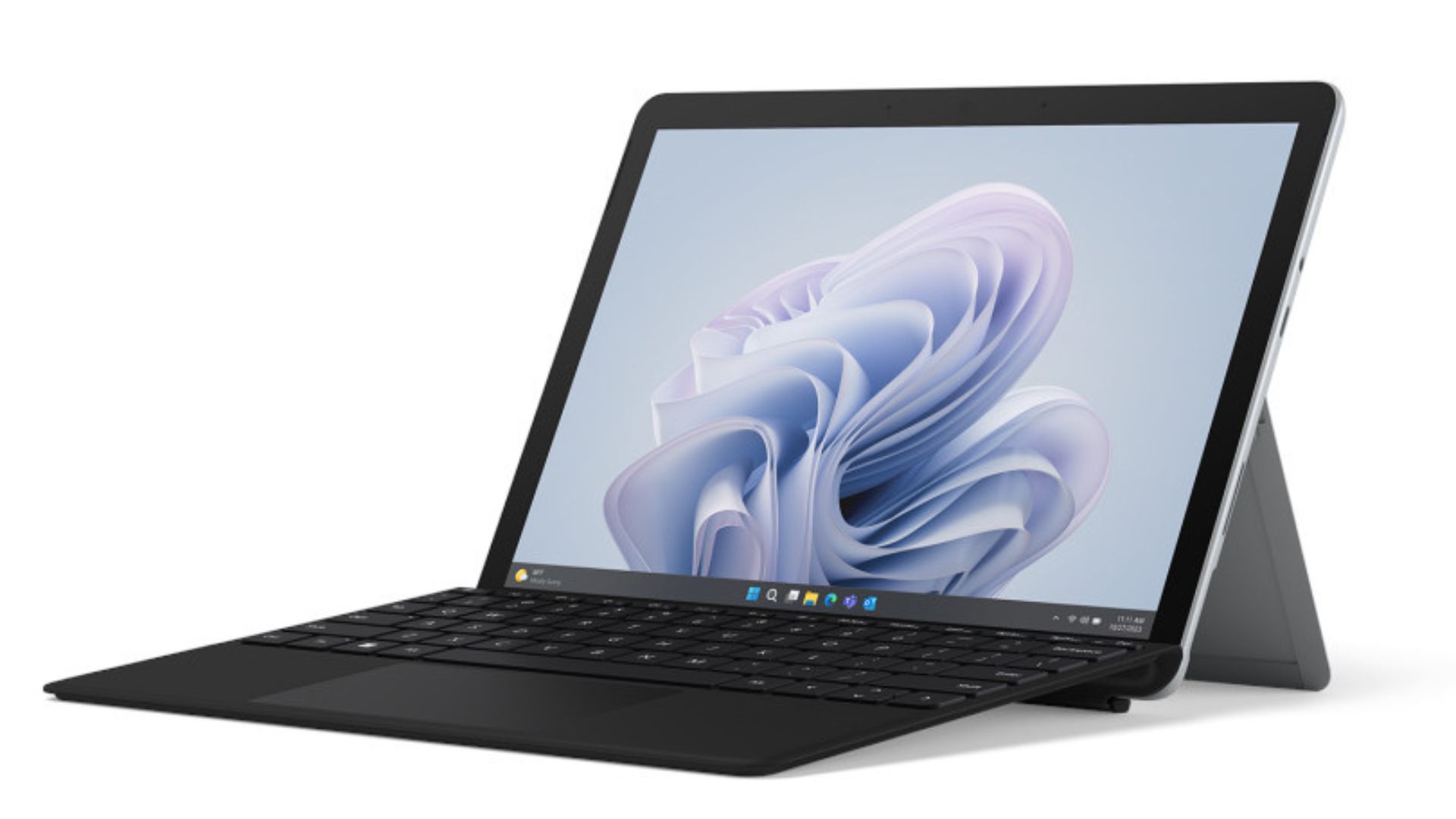News
Microsoft Surface Go 4 Goes Official With Intel N200 Chipset
The Surface Go 4 retains display and design from Surface Go 3, but brings major performance changes.

During today’s Surface device launch event, Microsoft unveiled the Surface Go 4, the latest iteration of its budget-friendly 2-in-1 laptop series. While the Go 4 boasts some minor performance enhancements compared to its predecessor, it is not intended for general consumers.
Microsoft has specifically designed the device with businesses and frontline workers in mind. The two-core Intel Pentium processor found in the Surface Go 3 has been replaced with a slightly more powerful four-core Intel N200 chipset. The company claims that the new processor bring 4.5x performance bump in comparison to the previous model. The battery life also improves and can last up to 12.5 hours on a single charge.

Microsoft has made the decision to eliminate the 4GB RAM option that was available in previous models. As a result, the Surface Go 4 will now only come with 8GB of LPDDR5 RAM. This change is particularly welcomed, given that 4GB RAM is hardly sufficient for handling demanding tasks that require heavy processing. The storage options for the Surface Go 4 include 64GB, 128GB, and 256GB.
In terms of the exterior design, there haven’t been many changes to the Surface Go 4. It still retains the USB-C port, 3.5mm headphone jack, and microSD card reader from the Go 3. This latest iteration also retains the 10.5-inch PixelSense touchscreen display with a 3:2 aspect ratio and an adjustable kickstand, allowing for usage in various form factors. However, on the inside, certain components of the Surface Go 4 have been redesigned to prioritize easier repair or replacement.

Unlike its predecessors, the Surface Go 4 is equipped with user-replaceable components, including the display, kickstand, motherboard, and more. In fact, the Surface Pro 9 has been hailed as the most repairable Surface by iFixit. Following in the footsteps of its larger sibling, the Surface Go 4 should offer the same level of repairability and versatility.
Additionally, the company boasts about the new PC that is equipped with AI features such as “Voice Clarity.” This technology enhances the quality of your microphone audio by reducing background noise, allowing for better focus on your voice.
Pricing and Availability
Unfortunately, the new Surface Go will not be available for purchase in retail stores as Microsoft has decided to exclusively sell it through its commercial channels and partners. However, there is still an option to buy it from Microsoft’s commercial store, although the price will be higher due to the upgraded RAM and faster storage in the entry-level configuration.
As for the pricing, Microsoft has not officially announced the pricing but The Verge reports that the Surface Go 4 will start from $579 for the 64GB storage model and will be released on October 3rd.

- Premium design
- Pretty display
- Great Surface Pen
- Good keyboard
- Perfect for office work
- Short battery life
- Quite expensive
- Slower than an iPad
- Top 3 Best Windows Tablets You Can Buy Today | 2024 Edition
- Microsoft Surface Go 4 Review: Great Tablet With One Weakness
- Microsoft Surface Comparison: Don’t Buy The Wrong Laptop or Tablet
- Microsoft Surface Go 4 vs Surface Go 3: A Detailed Comparison
- Microsoft Surface Go 4 Goes Official With Intel N200 Chipset
Leave a Reply
-

 The Best2 months ago
The Best2 months ago9 Best Tablets With Stylus Pen For Drawing & Writing | 2024 Edition
-

 The Best2 months ago
The Best2 months agoTop 10 Best Tablets with a Keyboard | 2024 Edition
-

 The Best1 month ago
The Best1 month agoTop 15 Best Android Tablets Based On Real Reviews | 2024 Edition
-

 The Best3 weeks ago
The Best3 weeks ago11 Best Tablets With 5G, 4G LTE & SIM Card Slot in 2024
-

 The Best2 months ago
The Best2 months agoTop 3 Best Windows Tablets You Can Buy Today | 2024 Edition
-

 The Best4 weeks ago
The Best4 weeks ago6 Best 8-Inch Mini Tablets Review & Comparison | 2024 Edition
-

 The Best5 months ago
The Best5 months agoBest Surface Pen Apps: 16 Must-Haves for Your Surface Pro & Go
-

 The Best2 months ago
The Best2 months agoThe 8 Best Samsung Tablets: Our Big 2024 Comparison










Pingback: Microsoft Surface Go 4 vs Surface Go 3: A Detailed Comparison